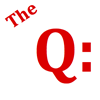
|
Which of the diagrams are correct ray diagrams showing how light from an object (in RED) travels to the eye when sighting at the image (in PINK)? Include all that apply.
|

|
There are six diagrams shown here. Two or more of them are correct ray diagrams. A ray diagram shows the mirror, an object, an image and the set of incident and reflected rays. The rays demonstrate how light gets from the object to the eye location as the eye sights at the image. Proper construction of a ray diagram is based upon the two principles shown below in the Know the Law sections.
|

|
Object Distance and Image Distance:
If an imaginary line is drawn connecting the object location and the image location, it will intersect the mirror at right angles. The distance measured along the line from the object to the mirror is referred to as the object distance. The distance measured along the line from the image to the mirror is referred to as the image distance. The object distance is always equal to the image distance.
|

|
Line of Sight
Line of sight - it is a simple idea, but a very powerful idea once you get a grasp of it. To see anything, you must sight at the thing. To see an image, you must sight at the image. When you sight at the thing - whether the image or some other object - light from the thing travels along a line to your eye. Your eye and the thing you are looking at are two points on the line of sight along which you are looking.
|

|
Each diagram shows a corresponding image. The first thing that you should check is if the image is drawn in the correct location. If not, then you can automatically rule out the diagram as being correct. See the first Know the Law section.
The second thing to check is the reflected ray. The reflected ray should always be drawn along the line of sight connecting the eye and the extremities (upper and lower) of the image. If the reflected rays are not drawn properly, then you can rule out the diagram as being correct. See the second Know the Law section.
The final thing to check is the incident ray. When sighting at the top of the image, light reflects off the mirror at the location where the line of sight intersects the mirror. The incident ray should start at the top of the object (not the bottom of the object) and travel to this point on the mirror. The same is true for when sighting at the bottom of the image. If the diagram satisfies these three criteria, then the ray diagram has been correctly drawn.
|